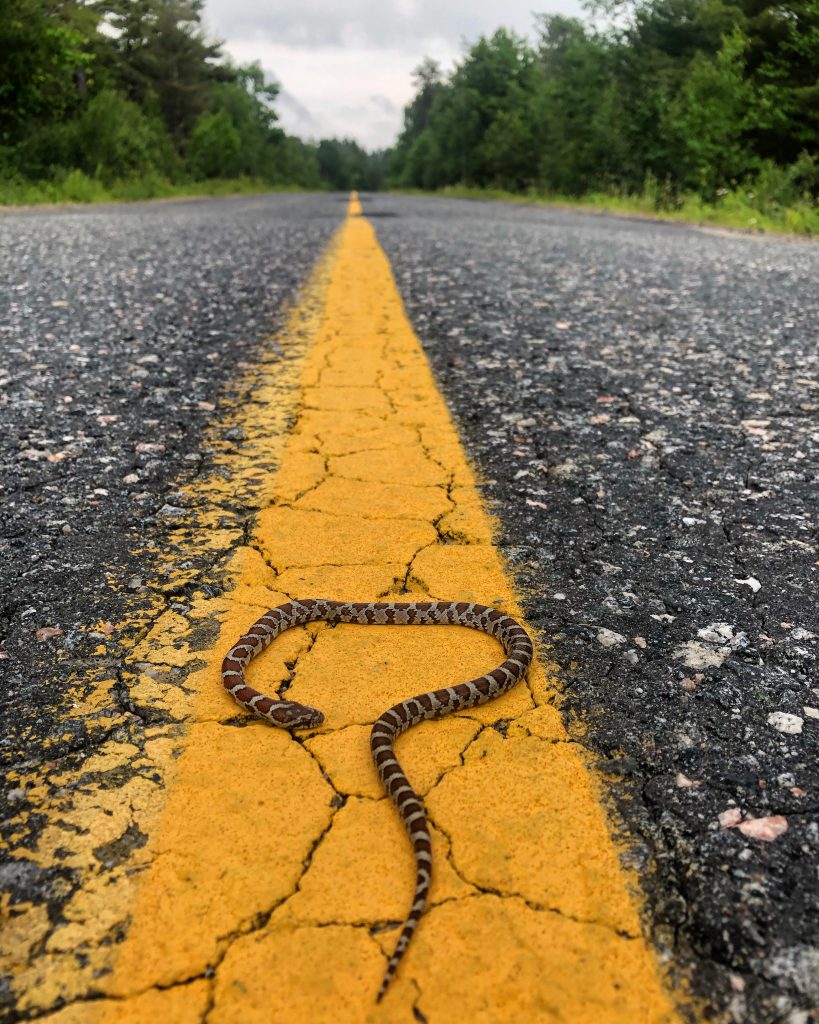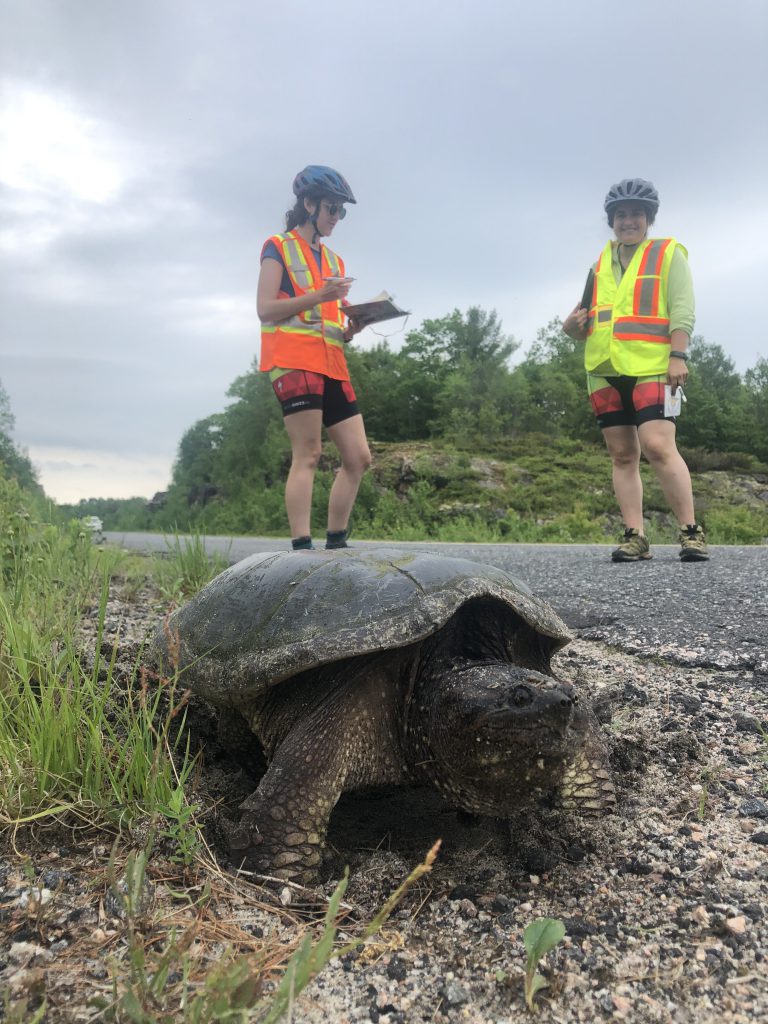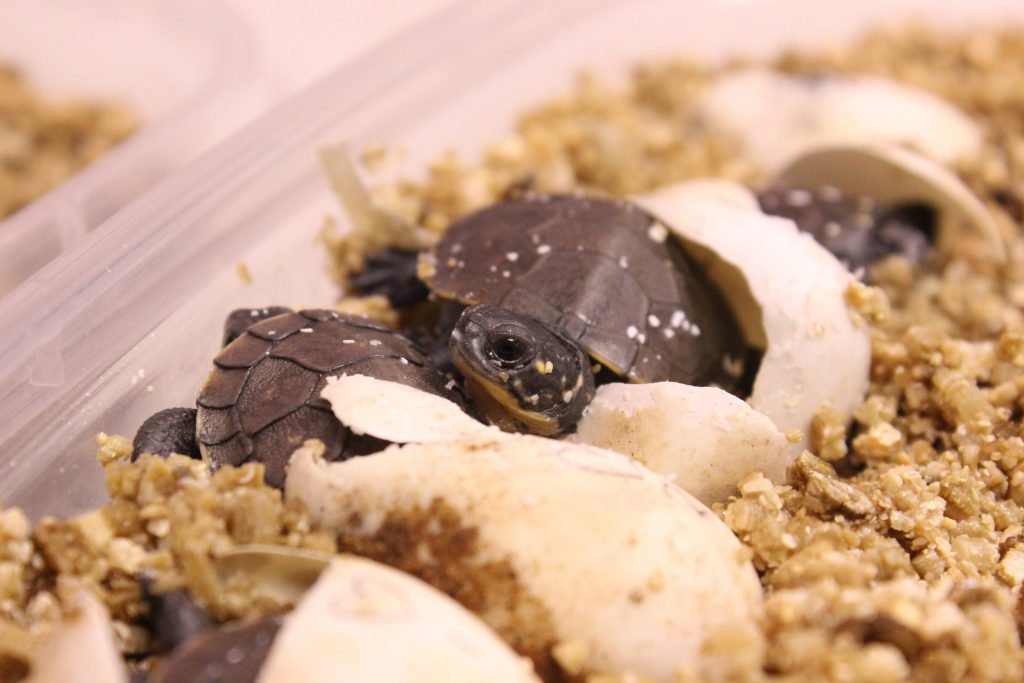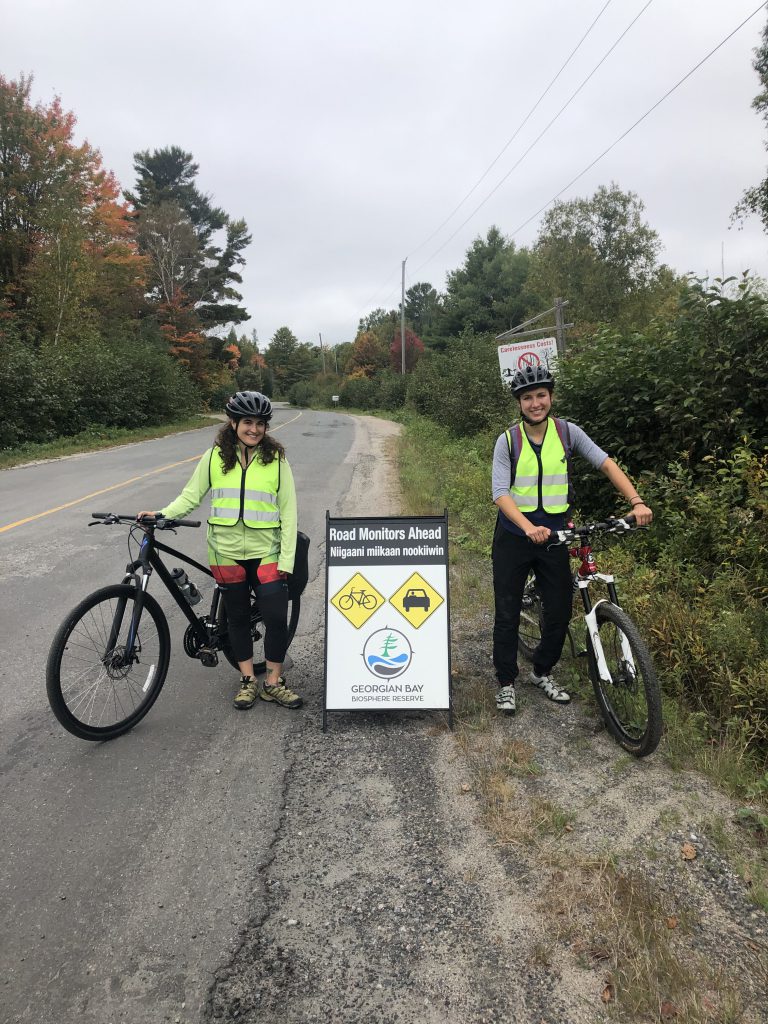As the sun shines on the edge of a large wetland, over 100 turtles await their return home as staff of the Georgian Bay Biosphere carry them through the reeds. Three large containers hold the turtle hatchlings, each between four and ten days old. These are just some of the hatched turtles of the 1,115 eggs that were collected and incubated and will all be released.
A safe distance from the road, the hatchlings are lowered to greet the shallow water all along the wetland’s edge. Within seconds, their small dark shells are no longer visible as they swim and hide in the murky water that is hopefully their home for decades to come. “Baamapii mishiikenh” Biosphere staff say, Anishabemowin for “see you later snapping turtle”.
The story of how these little turtles came to be in the care of Biosphere staff began in 2019 with the announcement of Environment & Climate Change Canada’s “Community Nominated Priority Place” (CNPP) designation. This is a special recognition of the ongoing conservation work in this region – one of only 15 such places in Canada – that came with funding over four years to support biodiversity work. The eastern coast of Georgian Bay was selected because of the variety and health of species and because of the highly networked and collaborative approaches to conservation that exist and can be strengthened.

The CNPP application was submitted by the Georgian Bay Biosphere Reserve (GBBR) and co-applicants Shawanaga First Nation, Magnetawan First Nation and Georgian Bay Land Trust, with considerable support from Wasauksing First Nation and neighbouring municipalities. Each partner is involved in planning and implementing projects related to biodiversity.
One of the largest threats to all wildlife, especially reptiles-at-risk, is road mortality. Through the CNPP project, a significant amount of time and resources are being devoted to road-focused projects. Every native species of turtle in Ontario is a species-at-risk, as are several snake species which is why they require special attention.
In 2020, Skerryvore Community Road, 15 minutes north of Parry Sound in the Township of the Archipelago, was deemed a priority due to the extensive culvert replacement work needed and known reptile abundance. The Biosphere team worked with the township, Tatham Engineering Limited, and Hall’s Construction to mitigate the project impacts and improve reptile safety post-construction. Strategies include using a cobble fill instead of sand near wetlands to discourage turtle nesting there, creating new nesting zones away from the road, and removing and incubating turtle eggs from construction areas in the spring, and releasing the hatchlings later in the season.

In Ontario, turtle eggs are laid in June and hatch sometime in late August depending on the summer’s weather conditions. The Skerryvore culvert construction was scheduled for July and August. This overlap in timing necessitated a plan to mitigate the impacts to nests in the construction zones. “Since June, we’ve surveyed Skerryvore Community Road by bike for six days each week and Highways 559 and 529 multiple times a week” says Tianna Burke, Conservation Biologist with the GBBR. Over 9,000 km will have been travelled by mountain and electric bikes by the end of the project.
“In June, we found 137 nests and at 42 of these we removed eggs to protect them; however, the rest were scavenged by natural predators which shows how few actually make it into the wild” Burke said. “Working alongside the Hall’s Construction crew, we were alerted to six additional nests that were safely removed. We had over 1,100 eggs in special incubators and after they hatched, each turtle was safely released to their original wetland. They are self-sufficient from the moment they hatch, so we only keep them for a few days while they build their strength,” explains Burke.
The handling of turtles for this project was permitted by the Ontario Ministry of Natural Resources & Forestry and would be illegal otherwise. “Caring for turtle eggs is very technical, with the right incubating equipment, temperatures and constant monitoring, and requires proper permits,” says Burke.

Road surveys have continued throughout the summer to record all snake and additional turtle observations. This information may identify wildlife crossing hotspots and inform future mitigation ideas. “We’ve recorded over 300 snake and non-nesting turtle observations so far this summer. There have been very few deceased turtles on the road, people have been very vigilant and are moving turtles off the road” said Burke.
Another significant project component has been the incorporation of Indigenous traditional knowledge into both the project as a whole and daily work. An Anishinaabek ceremony was held at the first turtle release to recognize the safe return of all the turtles to the wetlands.
Through the teachings of Sherrill Judge, Maawaanji’iwe (brings people together) Manager with GBBR, and Gracie Crafts, summer student and member of Wasauksing First Nation, Biosphere staff incorporate a asemma (tobacco) offering into daily road surveys. This is meant to be a step toward a “two-eyed seeing” cultural approach to conservation work that incorporates both Indigenous and western scientific ways of learning and sharing knowledge.

“By offering semma, we acknowledge and provide thanks to creation for the knowledge we gain. In return we promise that we will use this knowledge for the benefit of the land” said Judge. “Turtles hold a special place within Anishinaabek culture. In our creation stories, the continent that settlers call North America was formed on the back of Turtle. This is why many Indigenous peoples refer to this land as Turtle Island.”
This project and other conservation efforts under CNPP will continue next spring and summer. Biosphere staff plan to have a larger role for the public in the future, and continue to encourage reporting of all wildlife sightings to the Georgian Bay Biosphere Project within the iNaturalist app on personal devices. Turtle Trauma Kits have been made available for sale on the Biosphere’s website. Kits are $20 and contain everything that’s needed to handle injured turtles on roadways. A new “Turtles on Roads Guide” has also been created to assist people who want to help. Copies are available for free download on gbbr.ca or can be picked up at the Biosphere office at 11 James Street in Parry Sound.